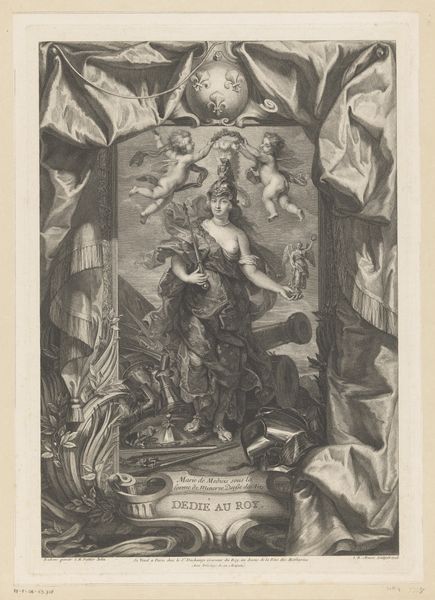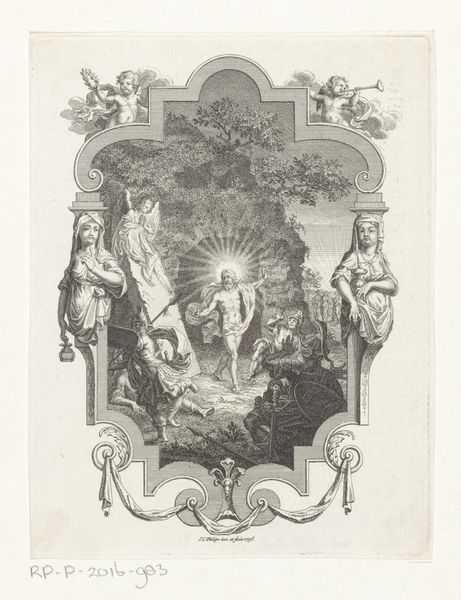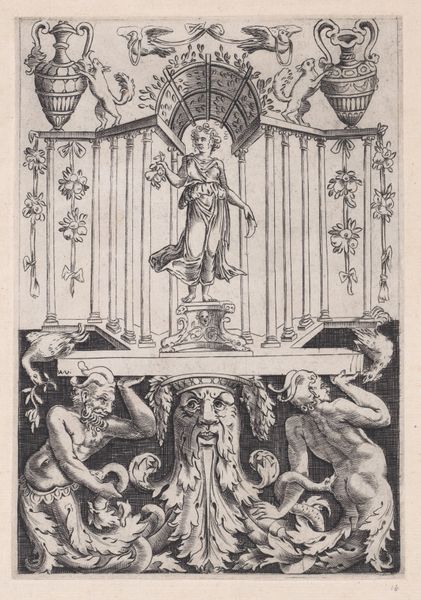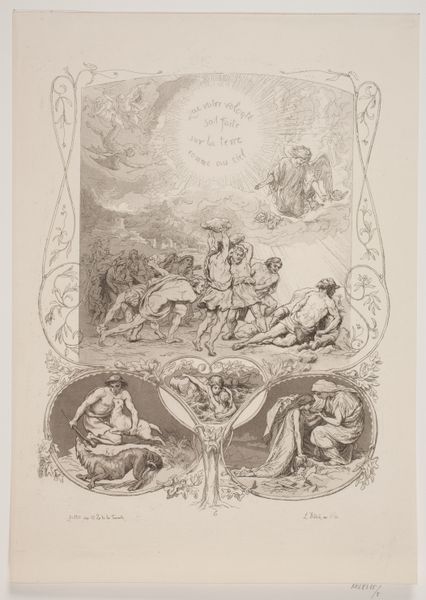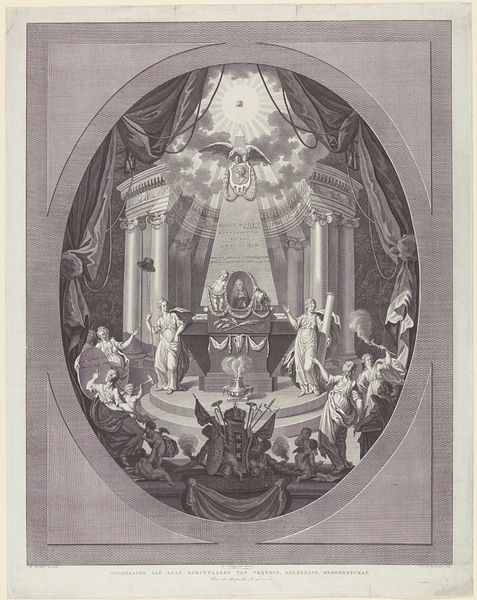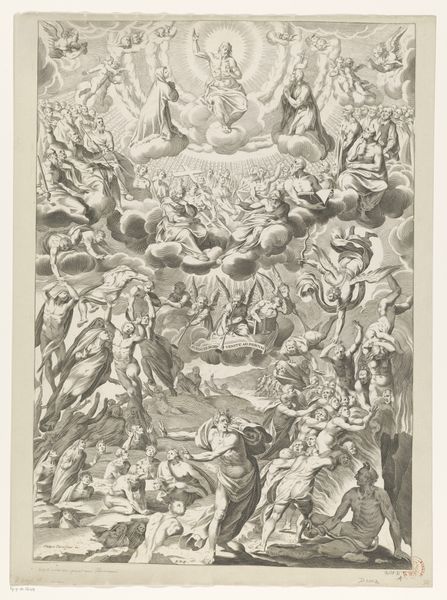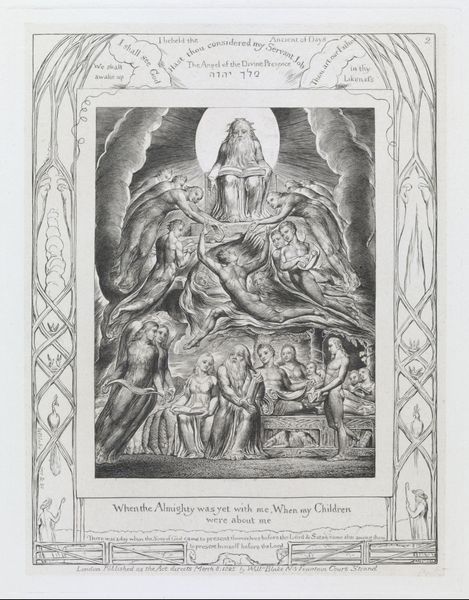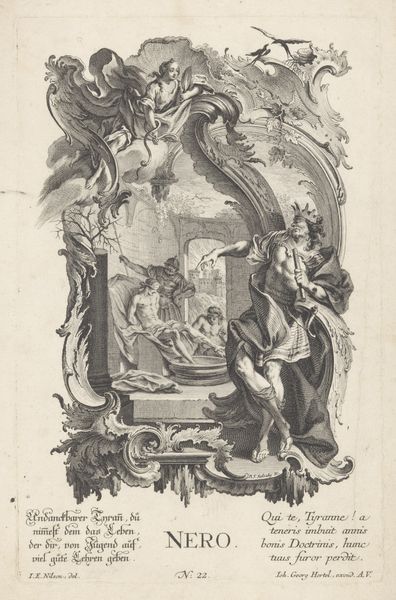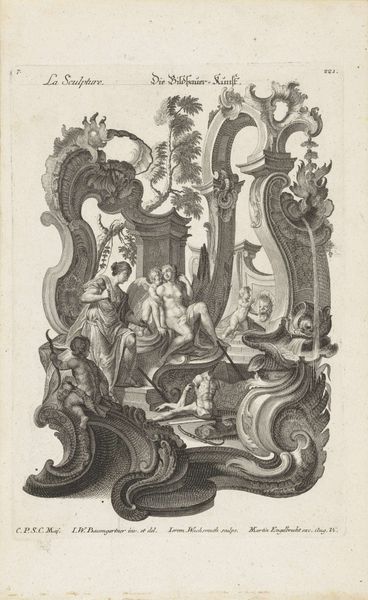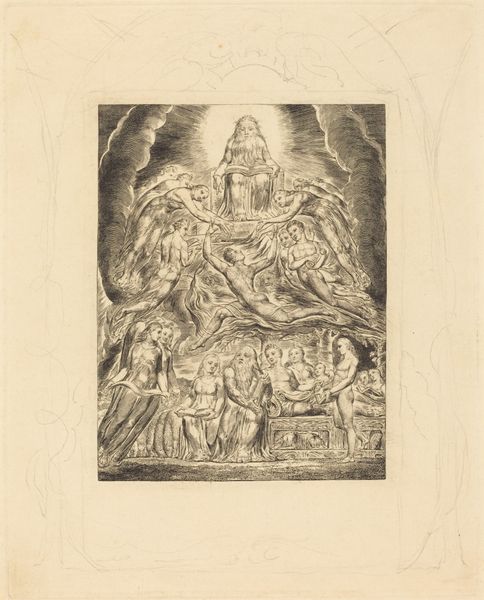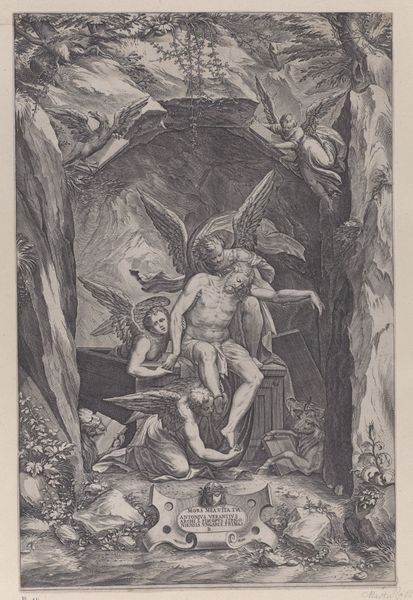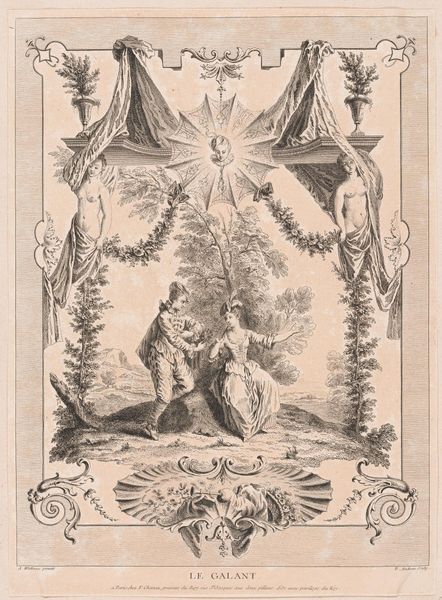
The Day of Judgment, from "The Grave," a Poem by Robert Blair 1813
0:00
0:00
drawing, print, etching, ink, engraving
#
drawing
#
allegory
#
narrative-art
#
ink painting
# print
#
etching
#
pencil sketch
#
charcoal drawing
#
figuration
#
form
#
female-nude
#
ink
#
pencil drawing
#
romanticism
#
men
#
line
#
history-painting
#
engraving
#
pencil art
#
male-nude
#
angel
#
christ
Dimensions: plate: 10 7/8 x 8 3/4 in. (27.6 x 22.2 cm) sheet: 12 x 9 1/2 in. (30.5 x 24.1 cm)
Copyright: Public Domain
Curator: This etching by William Blake, dating from 1813, is titled "The Day of Judgment, from 'The Grave,' a Poem by Robert Blair." The Met houses it. Quite the epic undertaking! Editor: An undertaking, indeed! It’s visually arresting—a swarm of bodies in chaotic motion, radiating upward into this… serenely detached central figure. Reminds me a bit of a cosmic mosh pit, if I'm being honest. Curator: Mosh pit might be an understatement! Consider the laborious printmaking process. Blake likely combined etching and engraving to achieve those incredible tonal variations. He used meticulous cross-hatching and line work; creating all of this before even going to press suggests an obsession with control, while depicting pure chaos. Editor: Oh, absolutely! Look at the way those lines define the muscles, the strained expressions... almost writhing off the page! But I wonder, do you think Blake was trying to wrestle with those notions of control himself? He throws everything at us – angels, devils, the saved, the damned – like he's saying, "Here, deal with this existential mess." Curator: Blake's radical ideas challenged the very structure of artistic patronage and production of art. Originally intended as illustrations, the etchings gained autonomy due to shifts in book publication and economic necessity. Editor: True. And there’s an emotional resonance. You can almost feel the terror of judgment mixed with the hope of salvation swirling around the composition, playing across each body. This isn’t just an etching, is it? It's like looking into Blake's psyche – both terrifying and oddly exhilarating! Curator: It certainly pushes beyond conventional visual representations of the era. This print isn’t only a religious allegory; its materiality, its sheer production, comments on spiritual aspiration versus material constraints during a time of immense social and political upheaval. Editor: So, what’s left, in your mind? Curator: Blake dared to explore both material and spiritual boundaries and helped usher Romanticism to full maturity. Editor: To be sure, a powerful image from Blake and quite something to dwell upon. Thank you for that perspective!
Comments
No comments
Be the first to comment and join the conversation on the ultimate creative platform.
